E-cigarettes – Heavy metals in e-liquids and e-vapors
ICP-OES technology meets Tobacco Products Directive (TPD) regulations
The manufacture of e-liquids is growing rapidly and exponentially in Europe, especially in UK, France and Germany. Unlike conventional cigarettes, E-cigarettes do not burn tobacco to deliver flavor. Instead, they contain a liquid-based flavorant (e-liquid) that is thermally vaporized by an electric element and inhaled by the smokers.
E-liquids are usually made of nicotine, propylene glycol, glycerine and flavorings. Their compositions vary between and within manufacturers all over the world, so there is a need for quality control in order to avoid unexpected harm or toxic effects.
Besides possible organic degradation products, the presence of trace elemental impurities in some e-liquids or e-vapor aerosol has been previously reported. Each e-liquid component can contain elemental impurities and be a source of contamination. E-cigarettes have several metal components in direct contact with the e-liquid, e.g. clearomizer, the tank attached to the e-cigarette battery to hold e-liquid. So potential toxins can also leach out of device materials depending on the composition.
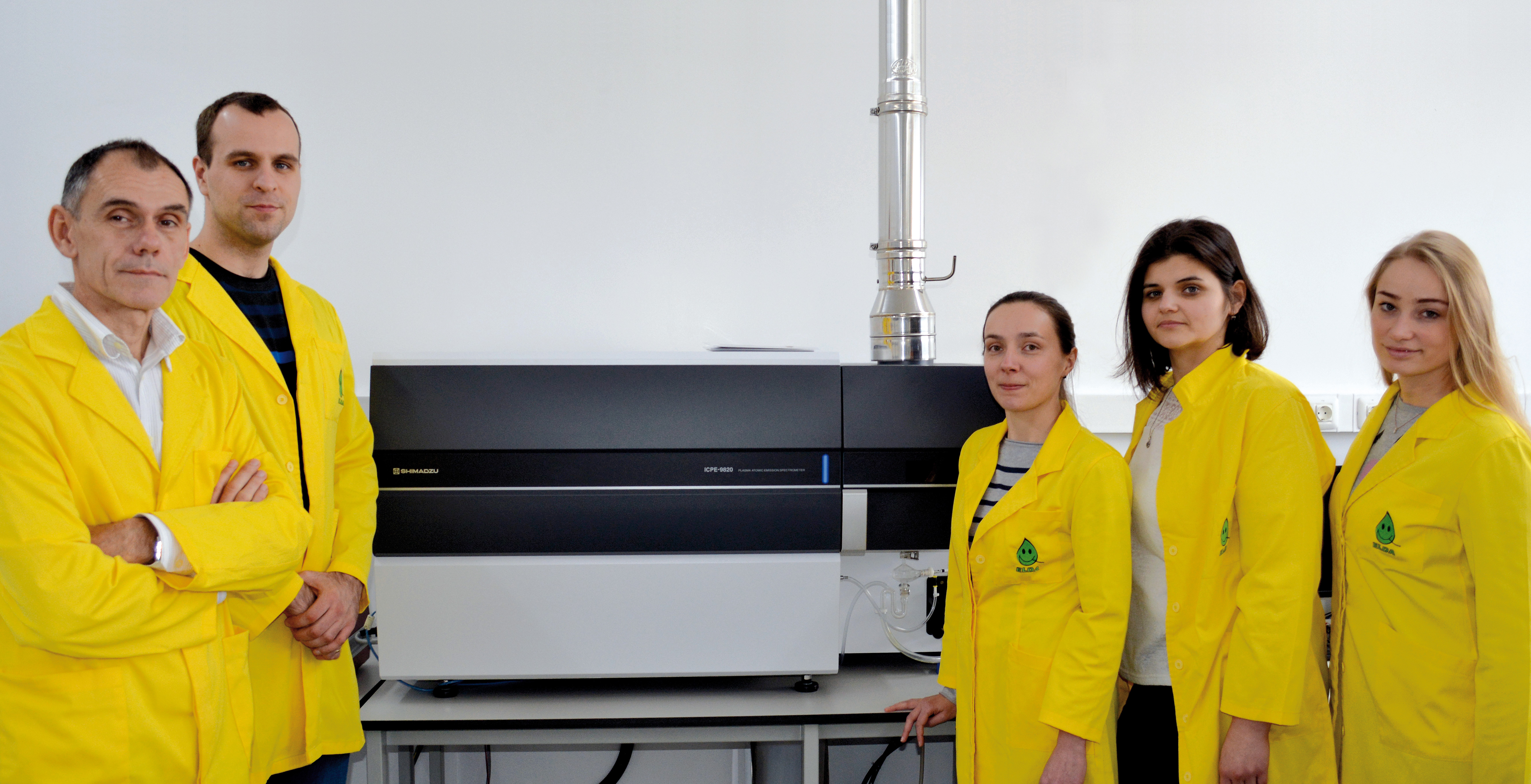 Figure 1: ELDA staff next to the ICPE-9820
Figure 1: ELDA staff next to the ICPE-9820
Tobacco Products Directive (TPD)
In May 2016, the Tobacco Products Directive 2014/40/EU (TPD) came into force defining regulations covering e-cigarettes (Article 20). Article 20 of the TPD places an obligation on the manufacturers and importers of electronic cigarettes and refill containers to submit a notification to the competent authorities of the Member States of such products they intend to market. The notification must list ingredients and emissions which result from the use of the products.
Depending on the material composition of the e-cigarettes, information on aluminum, chromium, iron, nickel and tin emissions should be provided. If other metals such as lead and mercury are present in the e-cigarette components, information on these metals should be included as well.
By May 2017, all products sold to customers must be fully compliant with TPD.
Each EU Member state can place further restrictions, but they all have to comply with the central rules of Article 20 of the TPD. Norm XP D90-300-2 AFNOR (France) defines maximum concentration of heavy metals in e-liquid as follows: lead (Pb) 10 mg/L, arsenic (As) 3 mg/L, cadmium (Cd) 1 mg/L, mercury (Hg) 1 mg/L, antimony (Sb) 5 mg/L.
Simultaneous determination of heavy metals
For simultaneous quantitative determination of heavy metals in e-liquids and e-vapor, ICP-OES (inductively coupled plasma – optical emission spectrometry) is the method of choice. Shimadzu’s ICPE-9820 achieves a broad dynamic range from ppb to percent order due to axial and radial plasma observation capabilities, high sensitivity and high sample throughput.
ICPE-9820 is equipped with vacuum high performance optics and uses a 1024 x 1024 pixel CCD (Charge Coupled Device) detector.
This system allows simultaneous acquisition of spectral data over the entire wavelength range from 167 nm to 800 nm; all element information and wavelengths are available to users without the need for any additional measurement. Because of the ICPE-9820’s sophisticated vacuum technology, purging is no longer required, thus completely eliminating any additional operating cost such as argon consumption.
Sample Preparation
Because of the high viscosity and the organic matrix, e-liquids samples were diluted and measurement was conducted using the calibration curve method with an internal standard. 0.5 g of e-liquid sample is weighed and filled up to 25 mL with 2 % nitric acid, with addition of 50 µL of 50 ppm yttrium as an internal standard. The aliquot is analyzed by ICPE-9820 with low-flow mini-torch, reducing plasma gas consumption to 10 L/min and less.
For metal emission analysis of e-cigarettes, the resulting aerosol is collected by an LM4E smoking machine with electrostatic precipitation, customized for e-cigarettes, which models human puffing behavior.
E-cigarettes were puffed based on the CORESTA recommended method N? 81 with the following puffing regime: 55 mL puff volume, three second puff duration, 30 seconds puff interval and a rectangular wave puff profile.
Electrostatic precipitate is washed twice with 2 % nitric acid to obtain a total volume of 25 mL. Internal standard is added as well. The aliquot is analyzed by ICPE-9820 under the measurement conditions listed in table 1.
 Table 1: Measurement conditions
Table 1: Measurement conditions
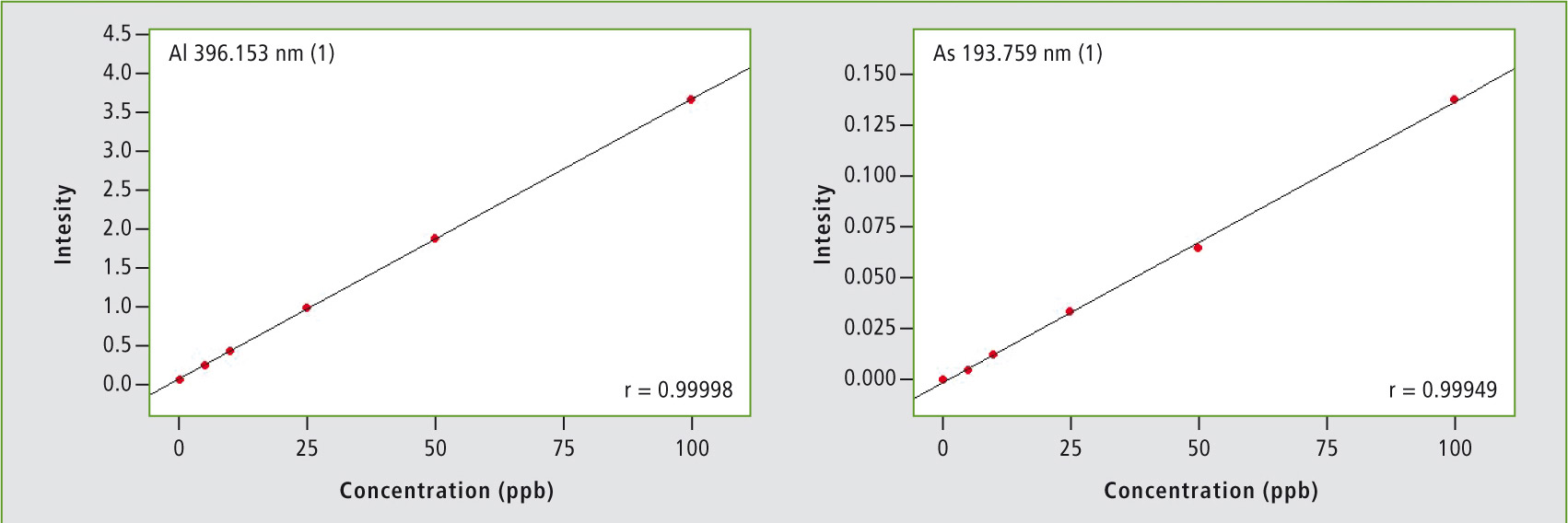
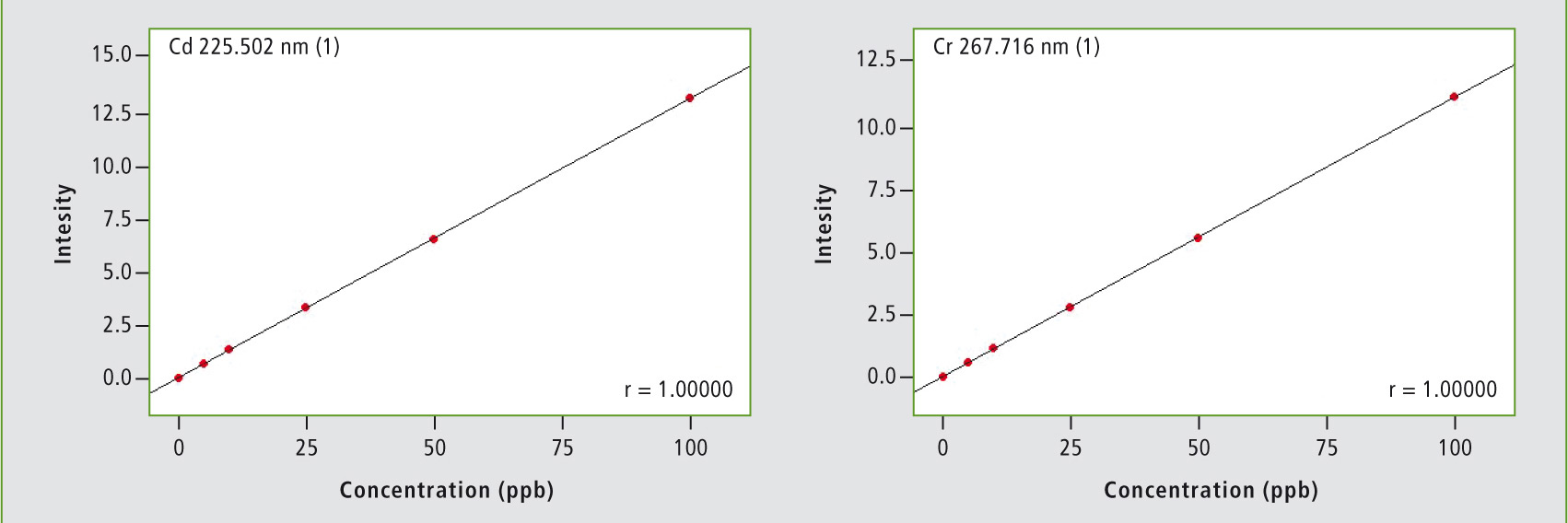
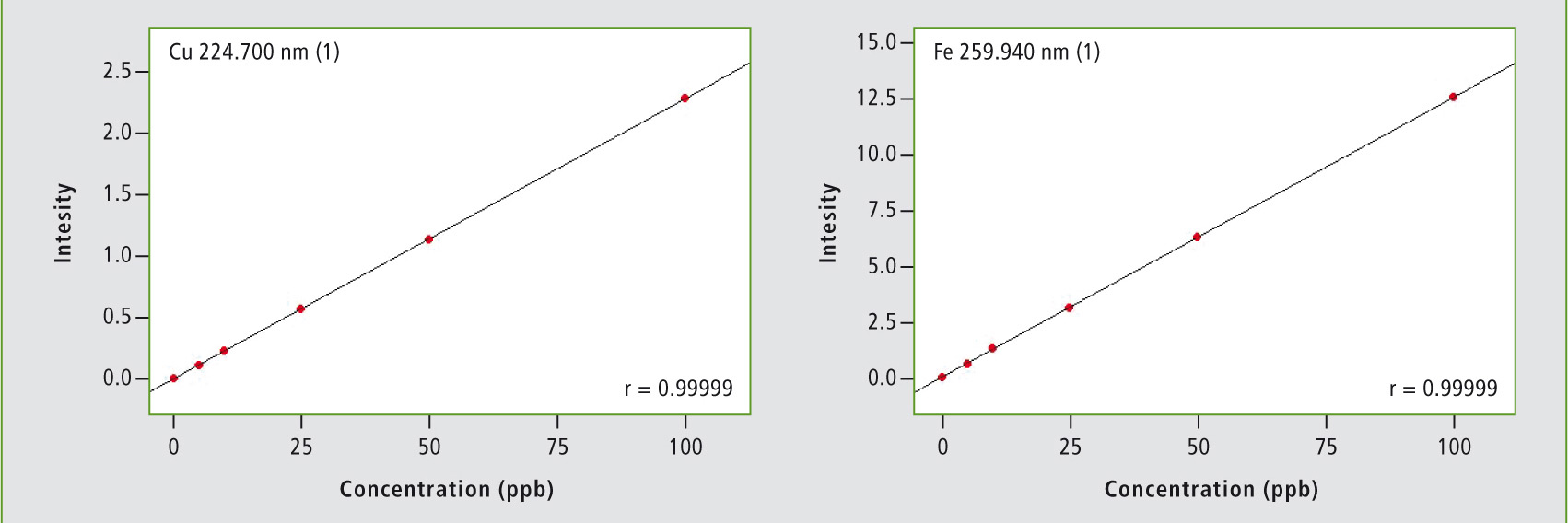
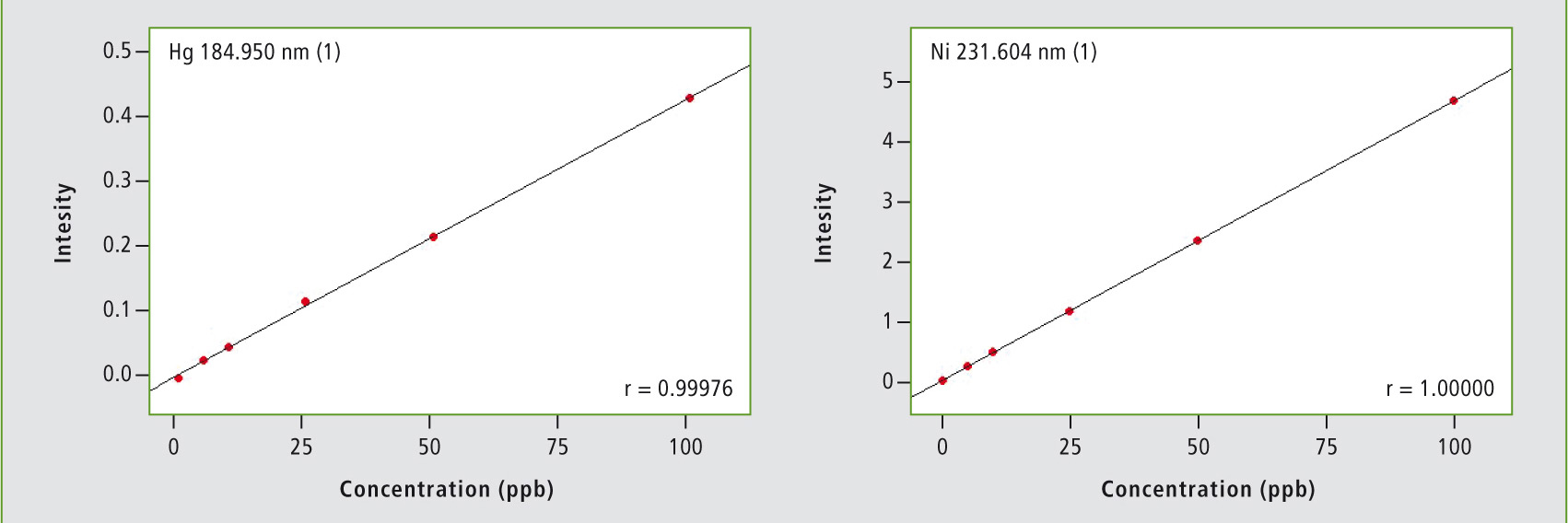
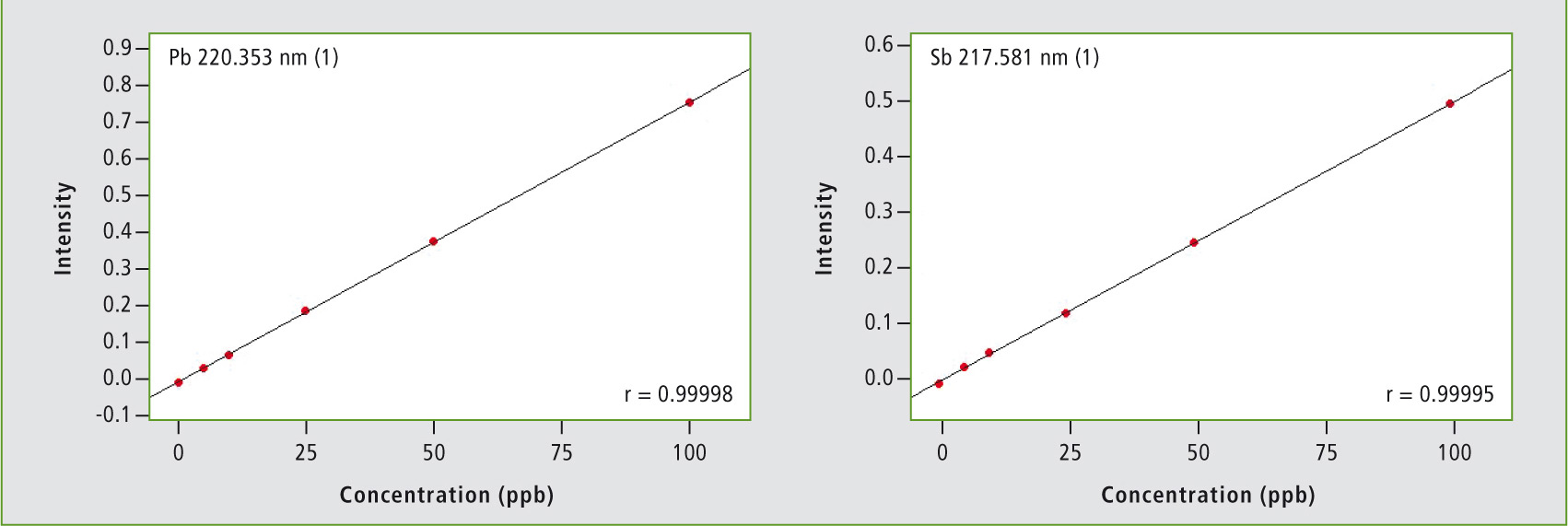 Figure 2: Calibration curves of metals obtained by ICPE-9820
Figure 2: Calibration curves of metals obtained by ICPE-9820
Results
After building calibration curves over six concentration levels, analytical quantitative determination is performed for aluminum, arsenic, cadmium, chromium, copper, iron, mercury, nickel, lead and antimony. This approach targets all metals likely to be found in e-liquids and in the aerosols of most e-cigarettes.
Figure 2 shows all calibration curves using multi-element standards from 5 µg/L to 100 µg/L, which yielded excellent linearity for simultaneous ICP-OES. Many e-liquids were tested with different nicotine strengths.
Table 2 shows selected results for metal quantity in e-liquid and e-vapor at high nicotine strength (18 mg/mL). Metal quantities for a given e-liquid are all within previous reported data and the maximum concentration defined by the AFNOR standard.
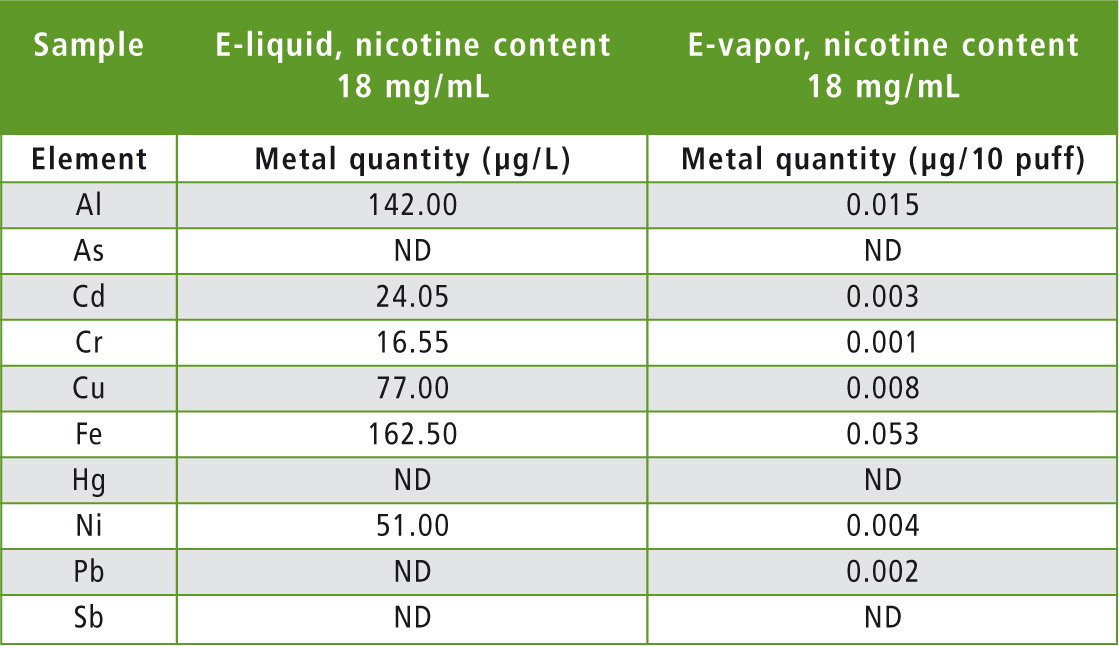 Table 2: Selection of results for metals quantitation by ICPE-9820; ND (not detected)
Table 2: Selection of results for metals quantitation by ICPE-9820; ND (not detected)
Conclusion
The ICPE-9820 is ideally suited to implementation of the TPD, providing users with a simple and reliable metal analysis in a single run in just a few minutes.
Also, the mini-torch and vacuum optics ensure that operating costs remain at a minimum level. E-liquids manufacturers need to improve quality control of the products in order to protect consumers from potential adverse effects. Further investigations using this analytical technique should provide more information on emissions tests related to material composition of the e-cigarettes.
ELDA Ltd. is the leading manufacturer of e-liquids for electronic cigarettes in Europe. Together with his co-owner, Dario Mareni´c, President of the Managing Board of the company, started his vision by finding the highest quality and rich aromas, and designing and creating formulas that have become the best recipes in the world.
In 2016, ELDA won numerous awards: At the VaporFair exhibition in Frankfurt, Germany, ELDA was the proud bearer of awards for the best vapor product; at the Expovape fair in Madrid, Spain, they were also awarded for the most innovative product of the entire e-liquid industry; the Vape Expo in Moscow, Russia awarded them for the best European e-liquid. With these awards, recognition has been granted for the best e-liquid manufacturer in the entire industry. Also in 2016, the company opened a new production facility and laboratory for complete analysis of e-liquid and electronic cigarettes on the basis of which they ensure, in cooperation with Shimadzu, fulfillment of the high criteria of the new TPD legislation.
According to ELDA, there has been no legislation of e-cigarettes for a long time. ”It is good that this market is becoming more regulated. Because we have an ICPE-9820 among other Shimadzu instruments, we are happy that we can use reliable instruments to gather information on elemental impurities in the e-liquids and emissions tests for the purpose of quality control, with the desire to protect our end users.”